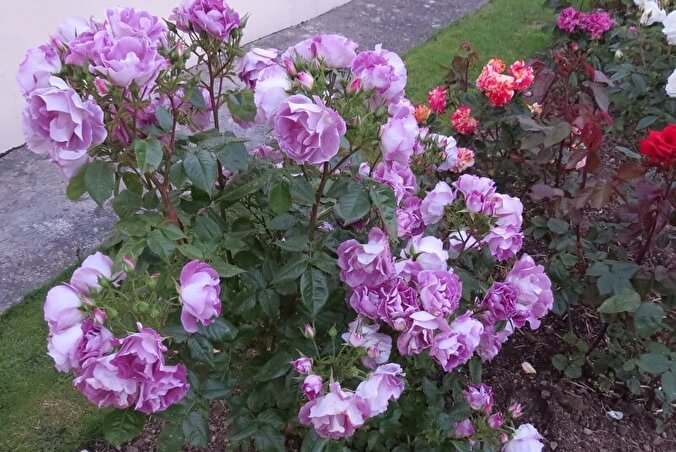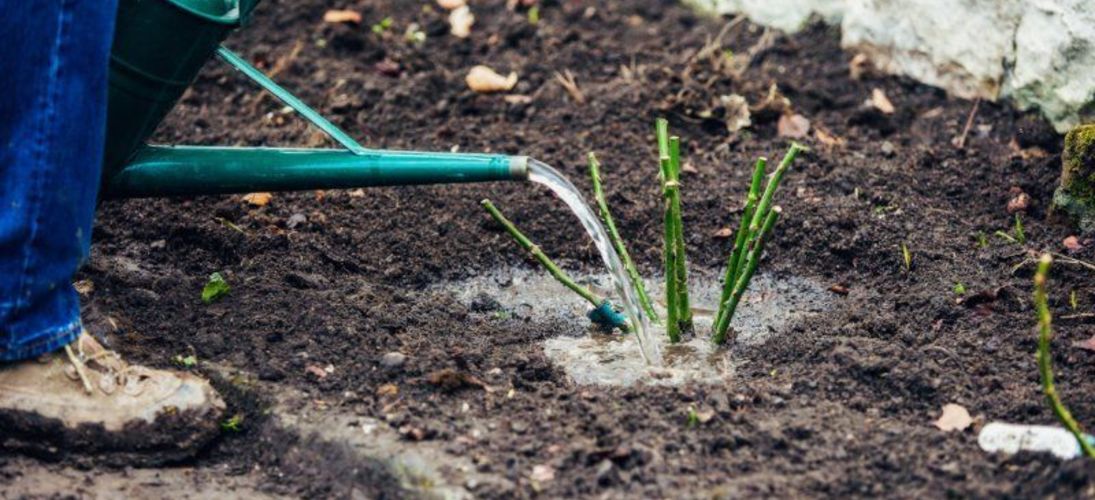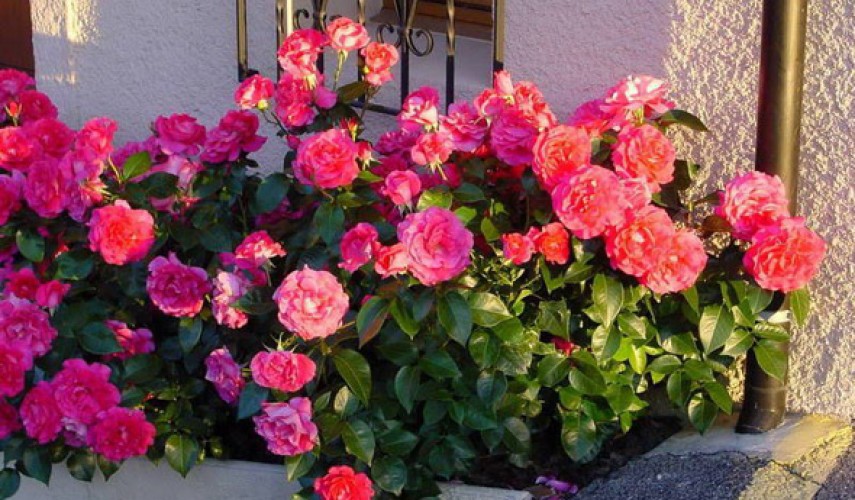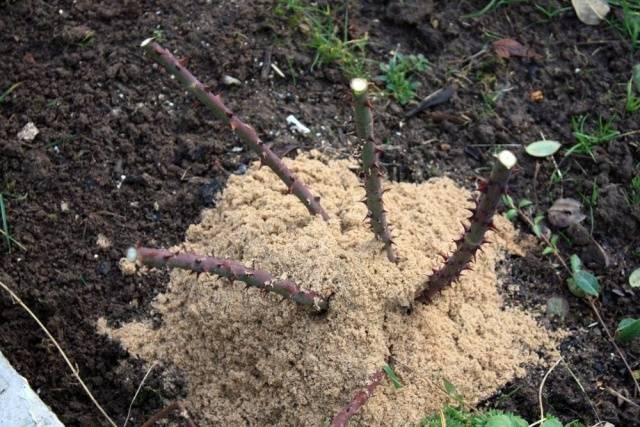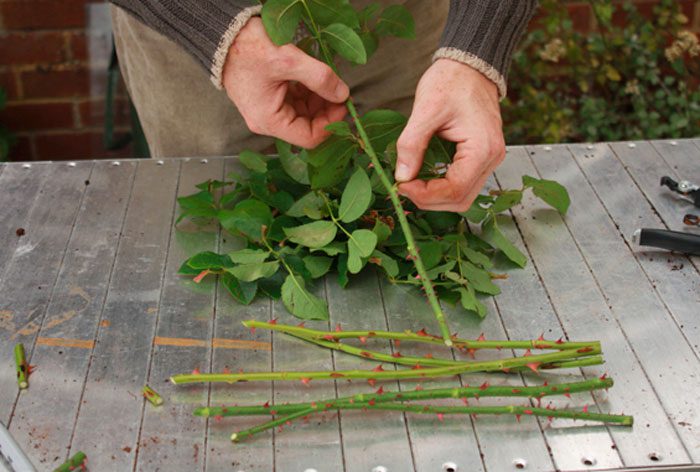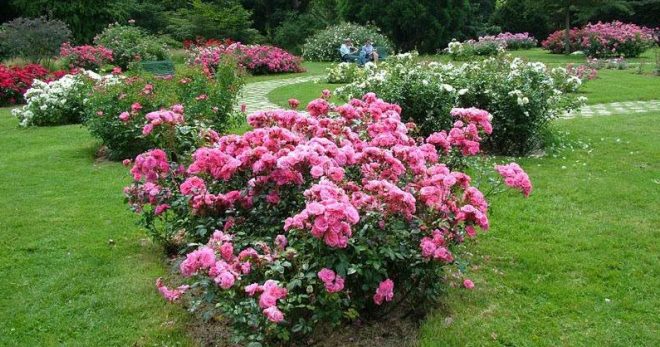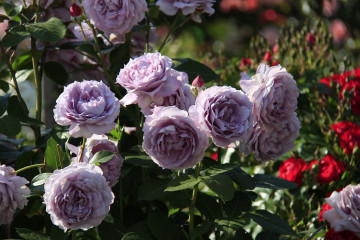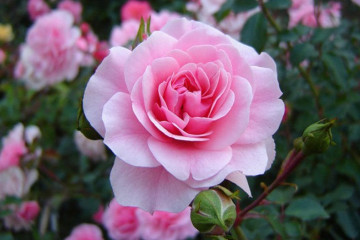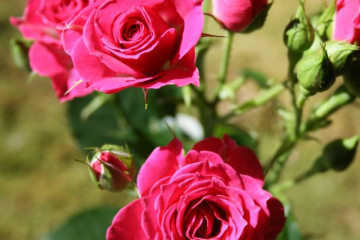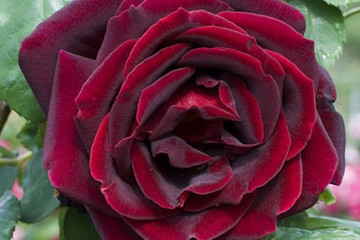Rose Floribunda: variety description, cultivation, bush care
Content:
Floribunda rose is a delightful type of flowers with many varieties, each of which is a striking element in landscaping. Planting and caring for roses is easy, and they also have such advantages as disease resistance and frost resistance.
What is a floribunda rose
Novice flower garden owners should know what a floribunda rose is - this is a variety bred through long-term selection, during which they crossed nutmeg, polyanthus and tea roses to obtain original and important qualities.
The main advantages of the variety:
- unpretentiousness;
- high decorative qualities;
- excellent quality of flowers;
- variety of shades.
General description of the species:
- bush 30-100 cm;
- flowers, depending on the variety of the rose, double, cupped, goblet or simple;
- flower diameter - 4-10 cm;
- cultivation options - on a trunk, bush, in a pot.
Flowering lasts from mid-summer to autumn, in several waves.
Popular varieties and their description
Floribunda varietal diversity is great. But there are a number of roses that are most popular among gardeners, their names and brief characteristics:
- Stromboli - the height of the shrub is about 80 cm. The leaves are shiny, rich green. Flowers are cup-shaped, double. In inflorescence from 3 to 10 buds, fluted petals. The aroma is weak, the flowering is abundant and long.
- Lilly Marlene - 70 cm, green leaves with a bronze tint. The flowers are slightly double, the color is bright red. The smell is strong.
- Bluvender is a spreading shrub of about 60 cm. The leaf plates are dark green in color with a glossy surface. Flowers are medium, double, pink with orange tint.
- Blue for you is a unique rose with its color, blue and lilac. The shape of the flowers is also unusual, even when open, they resemble not fully ripe buds. Reaches 80 to 90 cm, blooms until mid-October.
- Galaxy - 80 cm beauty with two-color petals, yellowish and light burgundy. The peculiarity of the rose is its aroma, which is similar to the smell of linseed oil.
- Raffles Dream is one of the most unusual and popular roses. It stands out strikingly for its large and lush buds. Her petals are attractive - they are corrugated, cut along the edges. The color of the rose can be very different. But such beauty is not devoid of a flaw - the rose has a tendency to fungal diseases, which requires careful and regular prevention.
The updated edition of the catalog of roses includes a separate species of floribunda - the Spray rose. These are plants not exceeding 50 cm, decorated with many small buds with a diameter of 4 to 7 cm.
Features of growing varieties
Growing floribundas is not difficult. To create comfortable conditions, you need to choose the right place, provide nutritious soil and regular watering.
When to plant a flower
You can plant a rose in the spring, but only after the frost stops. The earth must be warm. In regions with moderate climatic conditions, these are the last days of May, mid-June. In southern latitudes, you can plant a rose in the fall, until mid-October.
Site selection, soil preparation
Floribunda loves areas with abundant but diffused lighting. It is important that the plant is protected from drafts and cold winds. Soil preparation:
- clear the selected area of land from debris and weeds, last year's leaves;
- dig up thoroughly;
- dig holes 50 * 50 in size and add a nutrient substrate to it.
Substrate composition:
- 2 parts of garden soil;
- 1 part sand;
- 1 part of humus;
- 1 part peat;
- 0.5 parts of crushed and weathered clay.
Landing technology
Planting plants is not difficult, even a beginner can cope with this task:
- The roots of the seedlings are cut off up to 30 cm, and the shoots up to 40 cm.
- For a day, the seedling is lowered into a growth stimulator.
- The wells are watered with water, after absorption, the prepared nutrient substrate is poured.
- Lower the rose into the hole, the grafting site should be 2 cm above the ground.
- Sprinkle the hole with earth, lightly tamp, water.
It is recommended to put mulch on top. It can be humus, wood sawdust or peat.
Floribunda rose care
Grooming roses is easy - they need to ensure regular watering, loosening, mulching and pruning.
Watering
Watering should be systematic. The land should not be allowed to be dry for a long time. One flower needs at least 10 liters of water.
At average ambient temperatures, it is sufficient to moisten the ground once a week. During the heat of summer, the plant needs to be hydrated twice a week. In the autumn, watering should be reduced.
Top dressing
To grow a beautiful flower, it is recommended to fertilize it. During the period of active growth, mullein is used, which is added no more than 2 times with an interval of 2 weeks. In the last days of summer, compounds with potassium and phosphorus are added.
Pruning and shaping the bush
In order for a rose to reveal all its charm and look neat, it must be trimmed. Rules and recommendations:
- Spring - sanitary pruning is mandatory, which helps to rejuvenate the plant and give the shrub the desired shape. You need to remove the blackened branches that have not survived the frost. The shrub must be discharged so that it does not overgrow and lose its decorative properties.
- To ensure long-term and abundant flowering, medium pruning is carried out: shorten the shoots from 4 to 6 eyes, the old shoots more than 2 years old are completely cut off.
- At the end of autumn, pruning is necessary in order to cover the plant before the cold weather. You need to cut off the shoots by 40 cm.
Protection against diseases and pests
Floribunda has a strong immunity, and any diseases can occur on a rose only due to uncomfortable conditions for it. In particular, due to abundant watering, a fungus may appear on the plant. Prevention of fungal diseases - spraying with copper sulfate or Bordeaux liquid.
Parasites such as aphids and spider mites can attack the flower. Protection against them is insecticides, for example Karbofos, Actellik.But they need to be used only if insects have been seen on the plant. If they are not there, it is recommended to use a more gentle, but quite effective remedy - a solution of laundry soap.
Wintering
Floribundas are most often winter-hardy flowers, but in regions with severe frosts, the bushes still need to be protected. Preparing a rose for winter:
- in late spring, cut off the remaining withered buds, cut the foliage;
- young branches are removed, which with a high degree of probability will not be able to survive the cold and will turn black;
- the plant after preparatory pruning should not exceed 40 cm;
- spud the rose and cover with peat.
In regions with severe frosts, additional cover of the flower on top with spruce branches is recommended.
Propagation of a rose
You can propagate a rose by grafting:
- For cuttings, only mature, stiff branches are suitable.
- Selected shoots are cut above the bud, by about 0.5 cm. The length of each cutting should be at least 8 cm. The width is important - it should be approximately like a pencil.
- At the bottom of the cutting, a cut is made at an angle of 45 °, the top is cut straight.
- All leaves and thorns must be removed from the bottom of the cuttings. Process the cut itself with a growth stimulator.
- A hole about 15 cm deep is prepared in the ground.
- A stalk is inserted into the hole half of its length. If several roses are planted nearby, the distance between the seedlings must be observed at 15-30 cm.
- Sprinkle the cuttings with earth, cover them with plastic wrap on top to create a greenhouse effect.
It is easy to care for the cuttings. Every day, the film must be removed for 20-30 minutes to ventilate the plant. If this is not done, the earth will be very rotten, mold will appear on it, and the cuttings will rot. Regular watering is mandatory, after which the soil is loosened. Top dressing is introduced. Rooting of cuttings takes place within 2 years, subject to all conditions. In the 3rd year, the rose can be transplanted to another, already permanent place.
Individual flower varieties can be divided by grafting, which is a simple and good method. Seed breeding is practically not used. Planting with seeds is a very long process, not always giving a positive result. In addition, when seed sowing, it is not possible to convey all the decorative characteristics of the flower.
Floribunda rose in landscape design
In dachas and personal plots, floribunda is often used as hedges. Varieties of roses, distinguished by a strong aroma, are recommended to be placed near houses and gazebos. Low-growing shrubs look great as a frame for garden paths, alpine slides. Tall roses are placed in the background together with other flowers.
A single floribunda placed on a luscious lawn looks incredible and can create a striking accent alone. A solo rose like this would mean more than a whole rose garden of simpler types of roses.
Floribunda is the generic name for a number of magnificent roses with excellent decorative characteristics, unpretentiousness and disease resistance. This is a great solution in landscape design, because even one rose can decorate the most modest garden.

